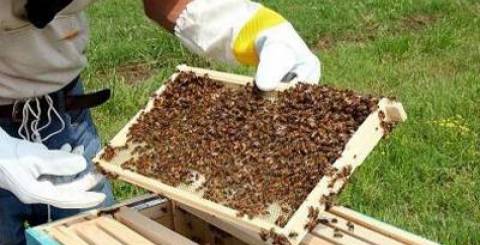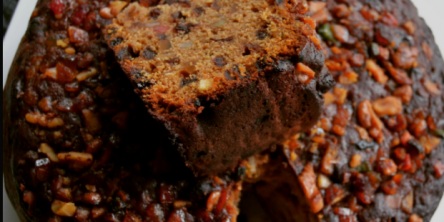How to Prepare Beehives for the Winter

Winter is a difficult time for bees, especially if their beehives aren’t prepared correctly. This is the time of year when most losses occur. If we take some necessary care in summer and spring, we can be perfectly prepared for the upcoming winters. A 20-40% loss of colonies is normal during a harsh winter, so don't be disappointed with a loss. Be proactive and not reactive. This blog will be highly informative for all the budding beekeepers.
The preparation of the hive for winter differs significantly from place to place. The occurrence of frosts, the cold wind, and, in some cases, even the rain is a factor that deserves dedication and adjustments to keep the swarms alive and without losses. The entry of cold air into the bee boxes can cause cooling and even the death of larvae.
However, we have listed some actions and precautions that beekeepers can take during the fall season below.
Relocating beehives
You will have to transfer the hives to sunny, well-drained areas during the winter to protect them from strong winds during the winter. If you transfer them, be sure to choose a place at least 3 miles (4.8kms) away from the starting position because otherwise, if you do not apply reorientation measures, workers may be confused and return to the initial place.
Protection from varroa mites
Check for varroa mites during the fall (September-October in most areas). If the number of mites is increasing, you may have to take drastic measures. During the winter, Mother Nature intentionally reduces the bee population in a colony to have fewer energy needs and more chances to survive.
However, the mite population cannot be reduced by the same proportion. Skipping this step may lead you up to a high “mite to bee” ratio during the winter.
Queen bee in winter
Do the standard inspection of the hive and look for a new, productive queen in the hive. Having a young and prosperous queen is necessary for good growth during the fall and the colony’s survival during the winter.
During the fall, the queen is said to lay many eggs, from which thousands of workers will emerge. Unlike the workers who appear during the spring and live 6 weeks on average, these workers will live on average 4-5 months and be in charge of heating the hive and heating the queen.
During late fall, the queen is genetically programmed to stop laying eggs until next spring. Hence, her ability to lay eggs during the fall is perhaps the most important factor in the colony's survival.
Reduce space
Although the hive space is increased in the spring and during the summer, space is left to grow. In winter, bees survive better in smaller spaces. As a general rule, in regions with long, strong winters, we generally need to have less space than the hive population.
Our purpose is to create less space than the hive population since bees will need less energy to heat their home. In addition, this way, intruders will find less space and, therefore, be discouraged from entering a hive. Most beekeepers remove all surpluses in late autumn.
Combining colonies
Make combinations of weak colonies with stronger ones. According to the old beekeepers’ motto, it is better to have two strong colonies in the spring than one dead. This is the time of year (autumn) that you may have to combine weak colonies with strong ones (never combine two weak colonies).
Feeding habit
Check regularly that food reserves are adequate. The best food for the winter is the honey they have produced and stored. There is a big dispute over the minimum amount of honey needed for the winter.
After all, a strong colony in winter is the basis for a strong and healthy colony and adequate pollination in spring. As a beekeeper, you can either leave a lot of honey in the brood chamber and/or replace some of the harvested honey with sugar water. Keep in mind that sugar with additives can cause dysentery.
Blocking hive entrance
Beekeepers should block hive entrances so that rats and other potential invaders are unable to enter. Many beekeepers also isolate their hives by wrapping them with special tar paper or a simple paper roof. It is always advised to leave an appropriate entrance since good ventilation is necessary for the survival of bees, so you must leave a small window.
However, in some conditions, this method results in a rapid increase in humidity within the hive, and you have to take care of this. You can also use mouse guards with special wires to block the entry.
Avoid heat escape
Don't open the hive during cold winter days, no matter how anxious you are. The heat will escape quickly, and the bees will need a lot of effort and energy to create this heat again. Use common sense. Open for less than a minute and only when the temperature has risen above certain levels.
A clean check is necessary
It is a good idea to regularly check and clean the area surrounding the hives for trash and unwanted vegetation. For example, if a cat, a small hedgehog, or a raccoon died somewhere close to the hives and was not removed, the smell will certainly attract many potential intruders to our colonies (rats, insects, etc.).
Having a clean surrounding area ensures hygiene and does not provide any refuge for potential invaders. This applies throughout the year, but our colonies are more vulnerable to intruders during the winter.
Considering the above points, we can say it is important to leave the hives strong and fed in winter so that they grow without problems as soon as spring appears. Although, it takes a certain amount of experience to help the bees through the winter. Every colony is different, and therefore, it is important to develop knowledge about what your bees need in their respective location.
Similar Articles
Discover the top 15 post-workout snacks that energize and nourish your body. Fuel your fitness journey with these delicious and nutritious snacks.
Energy supplements are more popular than ever because more men are substituting endurance sports like trail runs, marathons, and triathlons for gym time. But what precisely are they, how do they function, and should you include them in your exercise routine?
We are what we eat. And when we train or wish to be in good health, then the importance of proper nutrition is highlighted tenfold. Quality over quantity is always important when we wish to build our health and bodies
You must be using a cup or mug at least once a day to have your coffee or tea. Also, you might know people who are coffee lovers and always carry a cup with them. When it comes to drinking tea or coffee, most people have ceramic cups.
International dishes are becoming part of the growing foodie trend many people seemingly cannot get enough of. Every week, people tune into their favorite cooking and travel shows to check out the latest culinary delights from locals as well as abroad.
In the past decade or so, healthy eating doesn’t present the palatability challenges it once did. Grittiness, aftertastes, the expense of preparation or driving to the stores that sold these products. Today, many foods like meatless burger patties, vegan egg substitutes, and sugar alternatives cost less than dining out
On-Demand food delivery has been highly successful during the global pandemic. More and more people prefer contactless food delivery overeating at hotels and restaurants. The demand is so high that food delivery startups are facing tough competition.
Around the world, the UK gets an unfair reputation when it comes to food. Cities like Rome, Paris, Tokyo, and Mexico City are held in high regard thanks to their food scene. Unfortunately for London, there is this outdated stereotype about “awful British food”, often made with snark from the other side of the Atlantic, that has been hard to shake off
Garbanzo beans vs. chickpeas: A comparison of two legumes commonly used in Middle Eastern dishes, and the differences between them. How are they different? Which should you buy at the store?









